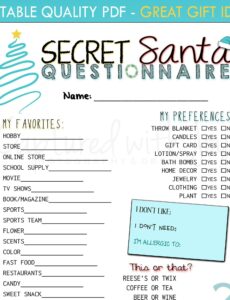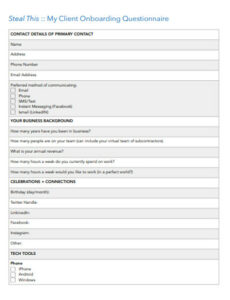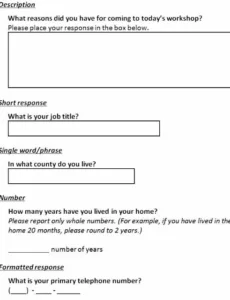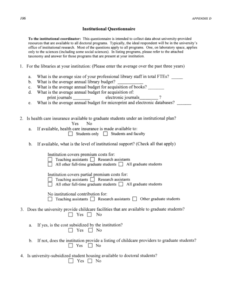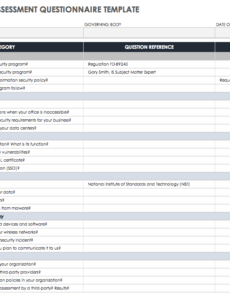Starting a new consulting engagement can feel a bit like setting sail on a vast ocean. You know your destination, but understanding the currents, winds, and potential obstacles ahead is absolutely crucial for a smooth journey. This is precisely where a well-crafted business consulting questionnaire template becomes your most reliable compass and chart, guiding both you and your client through the initial discovery phase.
It’s about laying a solid foundation, ensuring you gather all the pertinent details that will shape your approach and deliverables. Think of it as a strategic conversation starter, designed to efficiently extract key insights without wasting anyone’s valuable time. A robust questionnaire ensures you don’t miss any critical information, allowing you to tailor your services precisely to the client’s unique needs and challenges from day one.
Why a Business Consulting Questionnaire Template is Indispensable for Consultants
Having a standardized business consulting questionnaire template isn’t just about ticking boxes; it’s about elevating your professional game. It demonstrates your commitment to thoroughness and your ability to structure complex information. For starters, it ensures consistency across all your client engagements. You’re not reinventing the wheel with every new project, which saves an immense amount of time and mental energy, allowing you to focus on the actual problem-solving.
Beyond efficiency, a well-designed template helps manage client expectations from the outset. By asking specific questions about their goals, desired outcomes, and potential constraints, you’re implicitly setting the scope of work and identifying potential roadblocks early on. This proactive approach minimizes misunderstandings later and builds a strong foundation of trust and transparency between you and your client.
Critical Areas to Explore in Your Questionnaire
To make your template truly effective, it needs to cover several core dimensions of the client’s business. These aren’t just factual queries; they are designed to uncover the “why” behind their current situation and their aspirations for the future.

- Company Background and Overview: What industry are they in? How long have they been operating? What is their current structure?
- Problem Identification and Goals: What specific challenges are they facing? What do they hope to achieve by engaging your services? What does success look like to them?
- Current Processes and Resources: How are things currently being done? What internal resources (human, financial, technological) are available for this project?
- Stakeholders and Decision-Makers: Who are the key individuals involved in this project? Who will be the primary point of contact?
- Budget and Timeline Expectations: Are there any specific budget limitations or deadlines that need to be considered?
Asking these questions systematically ensures you build a holistic picture, enabling you to identify root causes rather than just addressing symptoms. It helps you understand their operational realities, their strategic direction, and the internal politics that might influence the project’s success. This deep dive prevents surface-level assumptions and allows for a truly impactful consulting intervention.
Building Your Own Powerful Business Consulting Questionnaire Template
Creating a business consulting questionnaire template that truly shines requires a blend of art and science. It’s not just about what questions you ask, but how you ask them. Start by thinking about the natural flow of a conversation. You want your client to feel comfortable and guided, not interrogated. Begin with broader, easier questions before diving into more sensitive or detailed areas.
Consider incorporating a mix of question types. Open-ended questions are invaluable for eliciting detailed, nuanced responses and uncovering insights you might not have anticipated. For example, “Tell me about your biggest challenge in sales right now?” can yield far more information than a simple yes/no question. On the other hand, closed-ended questions (like multiple-choice or rating scales) are excellent for gathering specific data points or quantifying information quickly.
Here are some tips to refine your template:
- Keep it Concise but Comprehensive: Aim for clarity and avoid jargon. Each question should have a clear purpose.
- Allow for Nuance: Provide space for “other” or “not applicable” responses, or encourage clients to elaborate.
- Test It Out: Before deploying it widely, try your questionnaire with a colleague or a mock client to identify any ambiguities or areas for improvement.
- Be Adaptable: While a template provides structure, be prepared to deviate or add specific questions based on preliminary discussions with a unique client.
Remember, your questionnaire is a living document. As you gain more experience and encounter diverse client situations, you’ll discover new questions that are highly effective. Don’t be afraid to revisit and refine your template periodically, ensuring it remains sharp, relevant, and continues to serve as an invaluable tool in your consulting arsenal. The goal is always to maximize the quality of information you receive while minimizing the burden on your client.
Ultimately, the power of a well-designed questionnaire lies in its ability to transform initial curiosity into actionable understanding. It’s the first critical step in building a strong client relationship based on mutual clarity and shared objectives. By systematically gathering essential information, you position yourself not just as a service provider, but as a strategic partner deeply invested in your client’s success.
Investing time in perfecting your questionnaire will pay dividends in every engagement, leading to more targeted solutions, smoother project execution, and ultimately, more satisfied clients. It’s a testament to your professionalism and a cornerstone for delivering truly impactful consulting services, paving the way for successful outcomes every single time.
